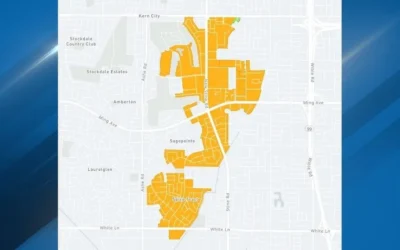Exploring College Softball: Understanding Run Rules and Key Differences with Baseball
As the college softball season reaches its climax with the impending College World Series (CWS) and Women’s College World Series (WCWS), it is essential for players, coaches, and fans to grasp the fundamental rules that govern the game. One crucial rule to understand is the run rule, a key difference between college softball and its male counterpart, baseball.
The Run Rule: An Overview
First and foremost, yes, college softball has a run rule. Known formally as the NCAA Softball Run Rule, this provision is designed to maintain the pace of the game and prevent excessive imbalances during play. The run rule applies in the NCAA Tournament, including the prestigious WCWS, and can result in games being called off early under certain conditions.
What is the NCAA Softball Run Rule?
The NCAA run rule is applicable when one team has a substantial lead over the other team by a specific number of runs. In softball, the games are played in seven innings, and the rule operates as follows:
- If a team has a 8-run lead after five innings, the game is called.
- If a team has a 10-run lead after four innings, the game is called.
These conditions allow for games to conclude early if one team is dominating, preserving the welfare of players and spectators alike by minimizing unnecessary prolongation of one-sided contests.
Differences Between College Softball and Baseball
While both sports share a common ancestry and many similar rules, there are notable differences between college softball and baseball, particularly when it comes to gameplay, equipment, and structure. Here are some key distinctions:
1. Field Dimensions
The field dimensions in softball differ markedly from those in baseball. A typical college softball field features:
- Base Path: 60 feet between bases
- Pitching Distance: 43 feet from the pitcher’s mound to home plate
- Outfield Distance: Ranges between 200 to 220 feet
In contrast, a standard baseball field features:
- Base Path: 90 feet between bases
- Pitching Distance: 60 feet 6 inches from the mound to home plate
- Outfield Distance: Ranges from 300 feet to over 400 feet
2. Equipment
The equipment used in both sports also showcases significant differences:
- Bats: Softball bats are generally shorter and have a larger barrel diameter compared to baseball bats.
- Ball Size: A regulation softball is 30.5 cm (about 12 inches) in circumference, while a baseball is 22.9 cm (about 9 inches).
- Gloves: The gloves used in softball are differently structured and are usually larger due to the softer nature of the ball.
3. Game Structure
In terms of game structure, there are also key differences:
- Innings: College softball games are typically seven innings, while baseball games consist of nine innings.
- Pitching Style: Softball pitchers deliver the ball underhand from a pitcher’s mound that is closer to home plate than in baseball.
4. Gameplay Rules
Various gameplay rules differ between the two sports, including:
- The strike zone in softball is typically smaller and strikes can be called on pitches that land just outside the traditional strike zone, which may differ from baseball’s strike zone.
- In baseball, there are designated base runners that can run without the tag; in softball, runners are tagged out if the ball is in the glove of the player in possession.
How NCAA Tournament and WCWS Games Can End Early
Understanding the run rule’s mechanics is essential for fans looking to follow the NCAA Tournament and the WCWS closely. A decisive victory by one team can create a swift end to the competition. Here’s how it can unfold:
- Early Termination: If one team exhibits exceptional performance and establishes an early lead of 10 runs after four innings or 8 runs after five, the game ends immediately.
- Impact on Team Morale: Such early ends can affect momentum for subsequent games in the championship bracket, showing the importance of maintaining competitive balance throughout the tournament.
Strategic Importance of the Run Rule
The run rule serves several strategic purposes for teams and coaches:
- Player Safety: It minimizes the risk of injury by preventing fatigue when outcomes are overwhelmingly decided.
- Game Management: Coaches can manage their pitching staff more efficiently, saving them for future games in the tournament.
- Encouraging Competition: The rule encourages teams to maintain a competitive spirit throughout the contest, deterring complacency.
Conclusion
As the excitement builds for the upcoming CWS and WCWS, fans and participants alike should take the time to understand the nuances of college softball, particularly the critical run rule that can influence the tournament’s trajectory. Armed with this knowledge, viewers and players can better appreciate the dynamics of the game and its fierce competition.
With these rules in mind, spectators can enjoy what promises to be a thrilling tournament filled with intense matches and exemplary athleticism. Whether you’re rooting for a favorite team or simply enjoying the sport, understanding these fundamental aspects of the game enhances everyone’s experience.







